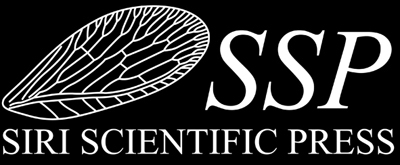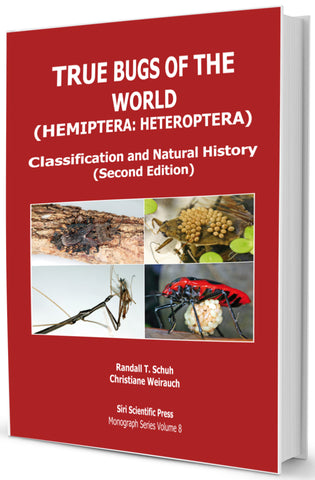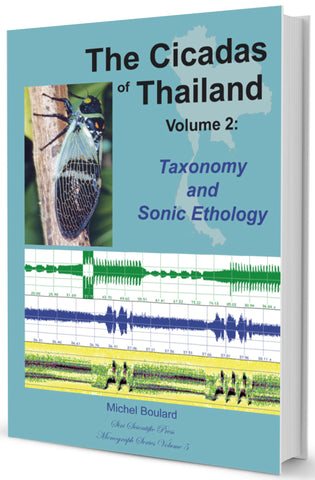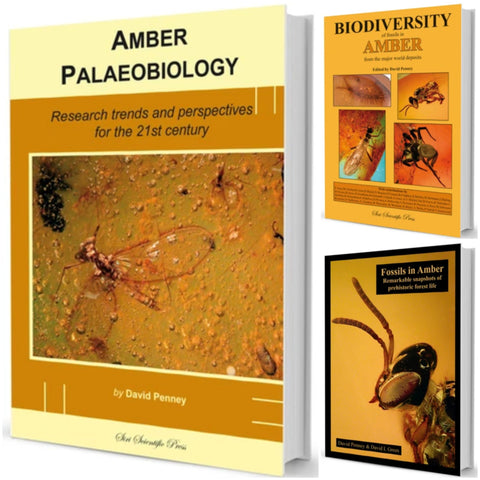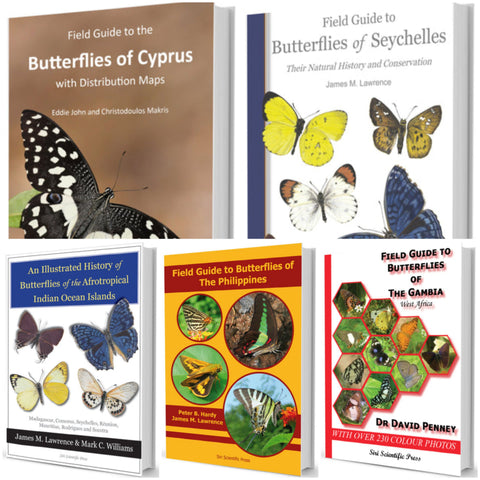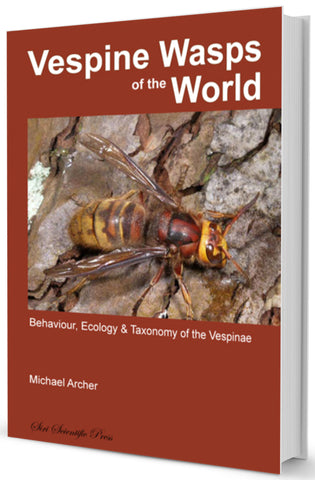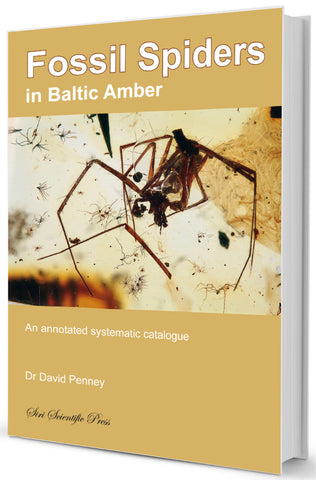
Fossil Spiders in Baltic Amber: An annotated systematic catalogue
by Dr David Penney
Siri Scientific Press (2 Nov 2020) 978-1-8381528-1-9 RRP £34.99
192 pp, 240 x 165 mm, soft cover, 12 text-figures and 42 colour plates
IN STOCK - Ships Within 24 Hours
Reviews
Coming soon.
From the back cover
With 557 named spider species in 202 genera and 58 families, Baltic amber represents the richest source of fossil spiders anywhere on the planet, with research describing this remarkable fossil fauna dating back more than 200 years. The identification of numerous species is problematic because many of the older descriptions are inadequate by current taxonomic standards. To compound this problem, many of the ‘type’ specimens on which the original descriptions were based have been lost. This has resulted in many dubious names, which have not hitherto been dealt with appropriately, making the dataset of Baltic amber spiders appear richer and more diverse than it actually is. Clearly, this will have consequences for any palaeoecological studies that choose to use these data. In addition, spider systematics is a highly dynamic subject, based almost entirely on extant taxa, with the latest changes (new families, genera and species, genus transfers etc.) documented in the World Spider Catalog. Until now, no similar comprehensive catalogue existed for the Baltic amber spider fauna, making it difficult for researchers to get a reliable estimate of the true palaeodiversity of the deposit or to trace the taxonomic and systematic history of any particular taxon. The catalogue presented here resolves these problems, updates the systematic placements of fossil taxa based on recent research on extant faunas, and also serves as a starting point for searching the literature when trying to identify a new Baltic amber spider specimen. It includes 95 new taxonomic contributions. This volume will be invaluable to anybody who curates a fossil collection including Baltic amber spiders and to those who identify their own material.
About the author
Dr David Penney has a PhD in fossil spiders preserved in amber, a DSc in amber palaeobiology and has published 100+ academic contributions over almost three decades of research in these areas. He has authored several books on fossil arachnids and inclusions preserved in amber.
Contents
PART 1 (Introduction)
Dedication
About the author
Acknowledgements, photo credits and repository abbreviations
Introduction
Basic spider anatomy
Amber
The Baltic amber forest
History of Baltic amber spider research
Computed tomography and synchrotron scanning
What can we learn from the Baltic amber spider fauna?
Biogeography
Palaeoecology of the amber forest (quantitative studies)
Palaeoecology of the amber forest (qualitative studies)
The systematic catalogue
Taxonomic changes in Version 1.0
References cited
PART 2 (The Systematic Catalogue)
Annotated catalogue of spider species preserved in Baltic amber
AGELENIDAE?
AMAUROBIIDAE
ANAPIDAE
ANYPHAENIDAE
ARANEIDAE (including Zygiellidae)
ARCHAEIDAE
ATYPIDAE
BALTSUCCINIDAE†
CLUBIONIDAE?
COMAROMIDAE
CORINNIDAE?
CYATHOLIPIDAE
DEINOPIDAE
DICTYNIDAE
DIPLURIDAE
DYSDERIDAE
EPHALMATORIDAE†
ERESIDAE
GNAPHOSIDAE
HAHNIIDAE
HALONOPROCTIDAE
HERSILIIDAE
HEXATHELIDAE
INSECUTORIDAE†
LEPTONETIDAE
LINYPHIIDAE
LIOCRANIDAE
MIMETIDAE
MITURGIDAE (=Zoridae)/LIOCRANIDAE
MYSMENIDAE
NEPHILIDAE
NESTICIDAE
OECOBIIDAE
OONOPIDAE
OXYOPIDAE
PHILODROMIDAE
PHOLCIDAE
PHRUROLITHIDAE
PHYSOGLENIDAE
PIMOIDAE
PISAURIDAE
PLECTREURIDAE?
PRAETHERIDIIDAE†
PROTHERIDIIDAE†
PSECHRIDAE
PUMILIOPIMOIDAE
SALTICIDAE
SCYTODIDAE
SEGESTRIIDAE
SPARASSIDAE
SPATIATORIDAE†
SUCCINOMIDAE†
SYNAPHRIDAE
SYNOTAXIDAE
TELEMIDAE
TETRABLEMMIDAE
TETRAGNATHIDAE
THERIDIIDAE
THERIDIOSOMATIDAE
THOMISIDAE
TRECHALEIDAE
TOXOPIDAE
TROCHANTERIIDAE
ULOBORIDAE
ZODARIIDAE
ZOROPSIDAE
ZYGIELLIDAE
Index to genera
Colour plates
Addendum by D. Penney, 2022: The genus Balticososybius was erected by Penney (2020), but was rejected by Wunderlich (2021 Beitr. Araneol., 14: 193). The reasoning presented by Penney (2020: 27, 139) was not adequately addressed by Wunderlich, who merely considered Sosybius to be well defined, despite the fact that the type specimen of the genus is lost and the sexual maturity of the 3.5 mm specimen was unclear (other than it was not a male). While Wunderlich may consider himself to have a familiarity of the generic concept of Sosybius due to extensive experience working on Baltic amber spiders, this does not create any degree of taxonomic stability with regard to the concept of this genus for future workers without such experience. Wunderlich proposed the alternative of using the genus name Adamator Petrunkevitch, 1942, but again, this is based on a juvenile specimen (Wunderlich, 2004: 1707). Hence, Wunderlich’s (2021) synonymy is rejected and Balticososybius Penney, 2020 is considered a valid genus.
We Also Recommend
